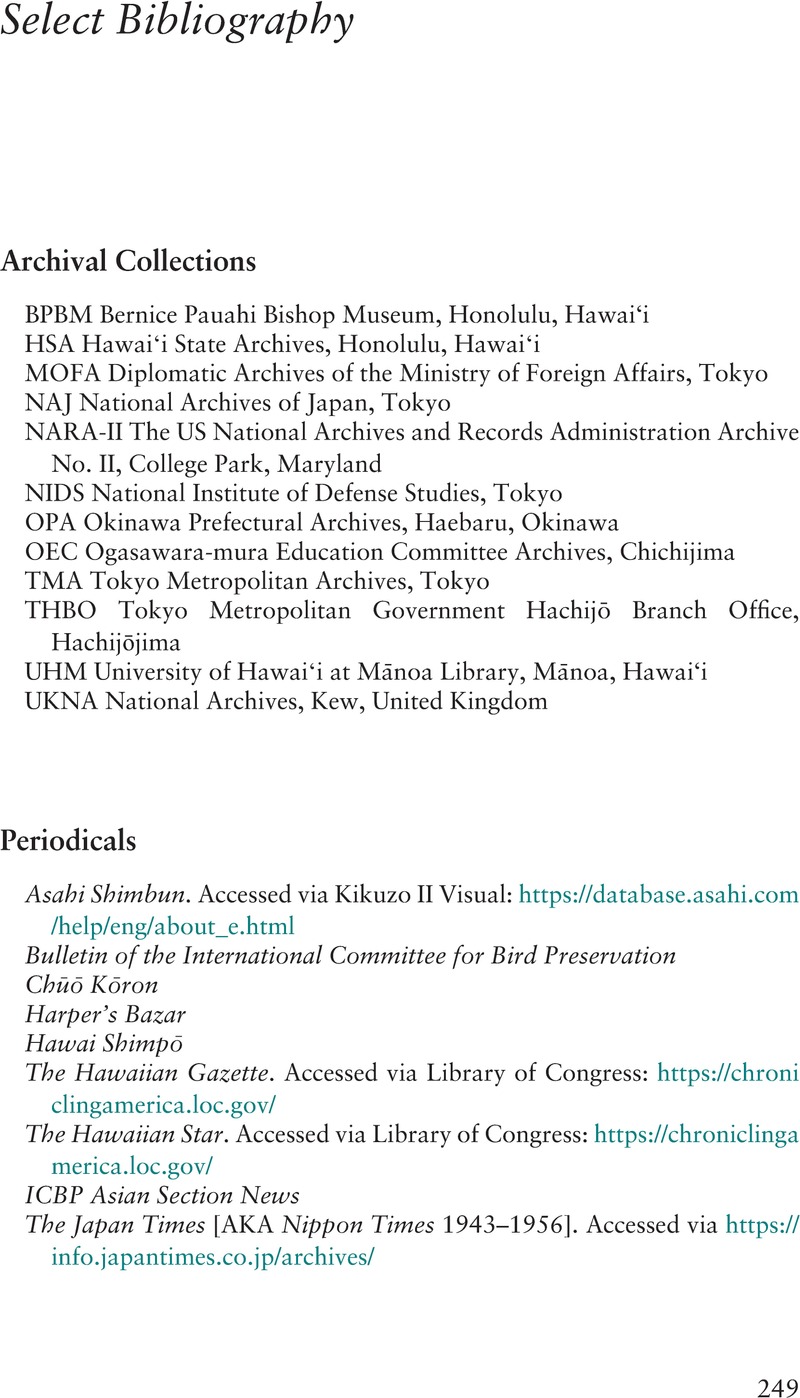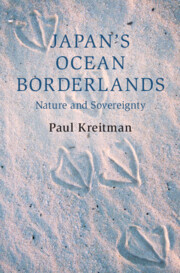Book contents
- Japan’s Ocean Borderlands
- Cambridge Oceanic Histories
- Japan’s Ocean Borderlands
- Copyright page
- Contents
- Maps
- Figures
- Acknowledgements
- Naming Conventions
- Maps
- Introduction
- 1 Bonins of Contention
- 2 The Race to Marcus Island
- 3 Bird and Sovereignty Conservation in the Northwest Hawaiian Islands, 1898–1911
- 4 Sand Dunes and Soldiers
- 5 Disaster
- 6 Resurrecting the Torishima Albatross
- 7 The Nature of the Senkaku Islands
- Epilogue
- Appendix Japanese Islands Abandoned, 1868–2013
- Select Bibliography
- Index
- References
Select Bibliography
Published online by Cambridge University Press: 06 July 2023
- Japan’s Ocean Borderlands
- Cambridge Oceanic Histories
- Japan’s Ocean Borderlands
- Copyright page
- Contents
- Maps
- Figures
- Acknowledgements
- Naming Conventions
- Maps
- Introduction
- 1 Bonins of Contention
- 2 The Race to Marcus Island
- 3 Bird and Sovereignty Conservation in the Northwest Hawaiian Islands, 1898–1911
- 4 Sand Dunes and Soldiers
- 5 Disaster
- 6 Resurrecting the Torishima Albatross
- 7 The Nature of the Senkaku Islands
- Epilogue
- Appendix Japanese Islands Abandoned, 1868–2013
- Select Bibliography
- Index
- References
Summary

- Type
- Chapter
- Information
- Japan's Ocean BorderlandsNature and Sovereignty, pp. 249 - 264Publisher: Cambridge University PressPrint publication year: 2023



